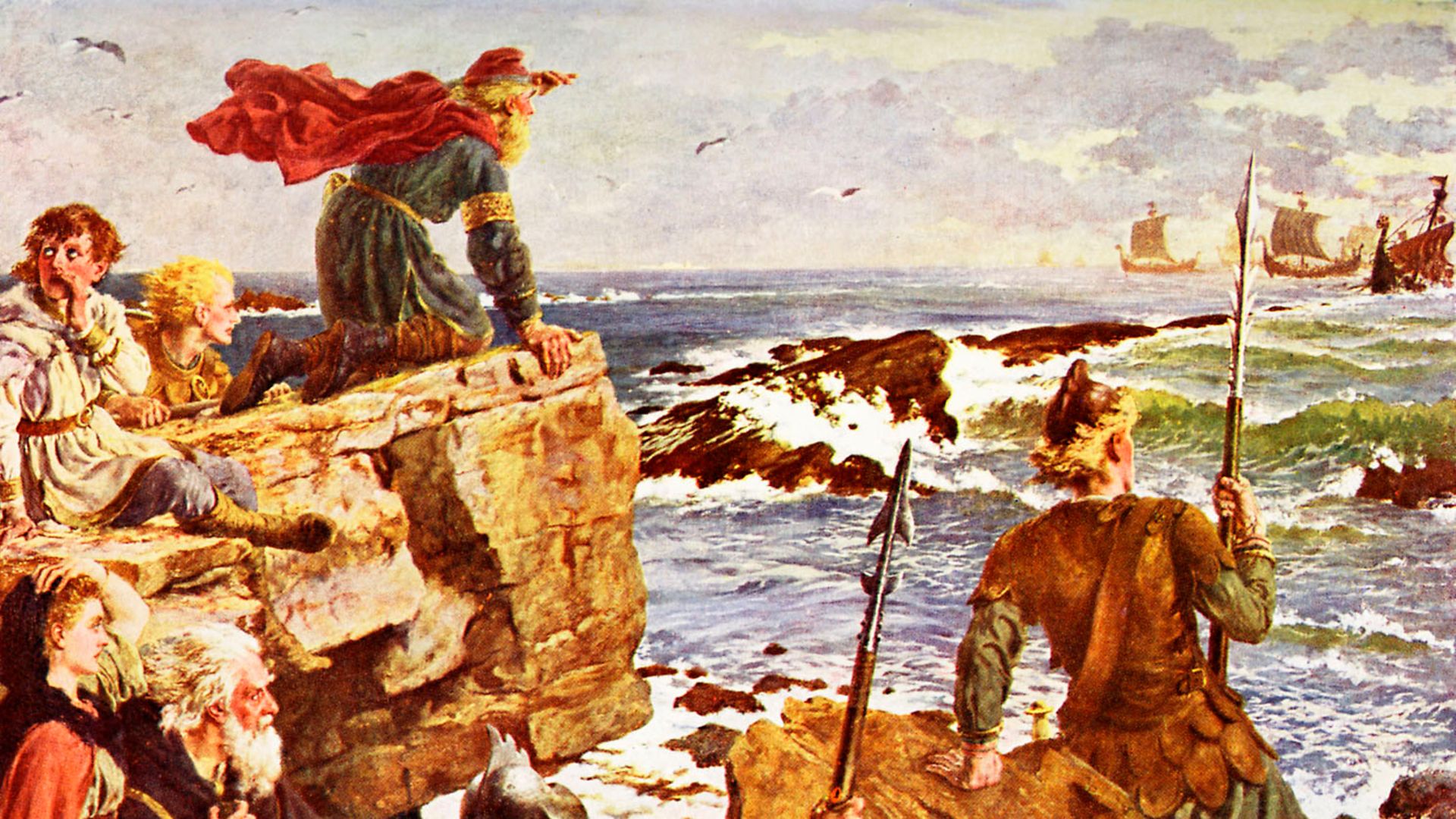
Why communication may have been the least of the problems when the Vikings invaded
The Great Heathen Army of the Danes invaded eastern England in 865. Large-scale Viking settlements followed throughout the 9th century and on into the 10th.
Many eastern and northern areas of our island came to have a heavily Scandinavian or Scandinavianised population, as can be seen today from the large number of Norse place-names: Grimsby, Scunthorpe, Skegness, Lowestoft, and scores more.
The numbers of Scandinavians who actually settled in Britain is not known, but from about 890 onwards a large area of eastern England officially became the Danelaw – the area of England signed over to the Danes by Alfred, the King of Wessex.
Parts of the Danelaw were shared out to Viking soldiers, transforming them into settlers, and more settlers subsequently arrived from Denmark.
Prior to 865, the Old English language had been developing gradually, with relatively little outside influence, for about 400 years. Now some people living in large areas of Britain became Danish-English bilinguals. But there is a very interesting question as to whether ‘bilingual’ is the right term to employ here.
The original parent language of Old Norse, North Germanic, had been a close relative of West Germanic, the parent language of English.
Many linguistic scientists believe that there was an even earlier language, Northwest Germanic, which was ancestral to both of them.
It is possible, then, that speakers of Old English and speakers of the Old Danish variant of Old Norse could still understand one another reasonably well during the 9th, 10th and 11th centuries, even without becoming bilingual themselves.
Old English and Old Danish may at that time have been rather more like very different but still reasonably mutually intelligible dialects of a single language, perhaps rather like modern African-American English and Geordie.
In a very interesting book called Language and History in Viking Age England, Matthew Townend writes that there is evidence suggesting that there must have been considerable mutual comprehensibility between the two languages, especially after long periods of contact between the two populations had bred familiarity with the other language.
Townend cites examples of contact between Norse and English speakers involving endeavours such as making treaties, buying land, negotiating contracts, agreeing marriages and settling disputes, where it is impossible to imagine that these would have been accomplished without the individuals being able to understand one another to a fair degree.
But no interpreters or translators are ever mentioned, as they often are when communication between speakers of other languages is being described.
Bidialectalism, then, might well be a better description of the situation in 10th century eastern Britain than bilingualism.
Communication was sufficiently successful to allow for face-to-face, day-to-day transactions, and to preclude the need for one or both of the speech communities in the Danelaw to become bilingual, or for interpreters to be used.
In spite of the fact that the Danelaw soon came back under English control, in 917, very large numbers of Danes stayed on in eastern and northern England, and cultural interaction between the two communities was considerable, with the end result being that they eventually melded into a single community speaking a single language.
The number of words in modern English with Old Norse origins is considerable: call, dirt, disk, droop, egg, ill, kid, kindle, loft, odd, root, scold, skirt, sky, ugly, weak… plus they, them and their. But in the local English dialects spoken in parts of the former Danelaw, the number of Scandinavian-origin words is even greater. The list, from different parts of the country, includes bairn (‘child’), beck (‘stream’), brig (‘bridge’), carr (‘wooded bog’), flit (‘move house’), kirk (‘church’), lake (‘play’), lop (‘flea’), loup (‘jump’), nieve (‘fist’), staithe (‘landing stage’), and stroop (‘throat’).
Just as British people have no problem these days borrowing words from the American dialect of English, so Old English speakers found it easy to adopt words from the Old Danish dialect of Northwest Germanic.
What do you think? Have your say on this and more by emailing letters@theneweuropean.co.uk










